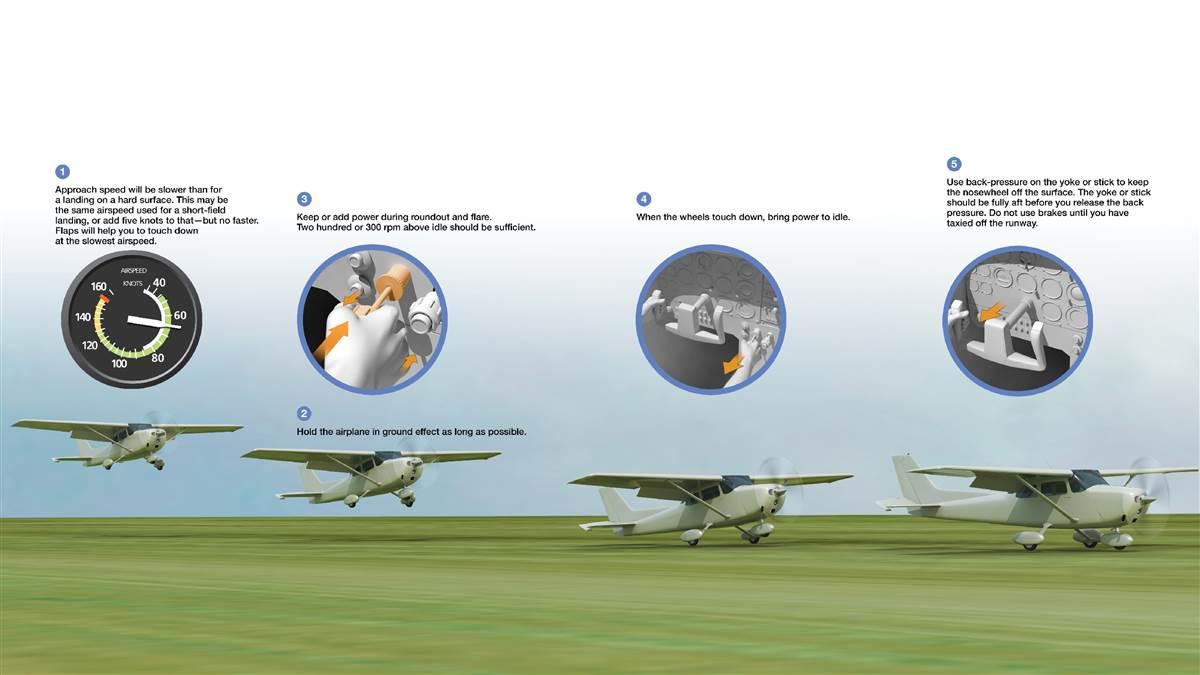Technique: Soft-Field Landing
Set it down Gently
Snow, grass, dirt, gravel. These unconventional runway surfaces have something in common: You’ll employ the same type of landing for each.
A soft-field landing enables the aircraft’s wings to support its weight as long as possible, so as to minimize the chance of its wheels sinking (into snow, soil, or wet grass). Touchdown is as soft as possible, and that is achieved through energy management. In other words, you’ll likely add or keep a bit of power in the flare to avoid touching down too firmly. Consult your airplane’s pilot’s operating handbook for airspeeds and flap settings—and before you land a rental aircraft on any unpaved surface, confirm that this is permissible. (Insurance requirements may prohibit that grass-field arrival.)
Private Pilot Airman Certification Standards
Skills for Task D, Soft-field approach and landing (ASEL)
- Complete the appropriate checklist.
- Make radio calls as appropriate.
- Ensure the aircraft is aligned with the correct/assigned runway.
- Scan the landing runway and adjoining area for traffic and obstructions.
- Consider the wind conditions, landing surface, obstructions, and select a suitable touchdown point.
- Establish the recommended approach and landing configuration and airspeed, and adjust pitch attitude and power as required to maintain a stabilized approach.
- Maintain recommended airspeed, or in its absence, not more than 1.3 VSO, plus 10/minus 5 knots, with wind gust factor applied.
- Maintain crosswind correction and directional control throughout the approach and landing.
- Make smooth, timely, and correct control inputs during the roundout and touchdown and for tricycle gear airplanes, keep the nosewheel off the surface until loss of elevator effectiveness.
- Touch down with minimum sink rate, no side drift, and with the airplane’s longitudinal axis aligned with the center of the runway.
- Maintain elevator as recommended by manufacturer during rollout and exit the “soft” area at a speed that would preclude sinking into the surface.
- Execute a timely go-around if the approach cannot be made within the tolerances specified above or for any other condition that may result in an unsafe approach or landing.
- Maintain proper position of the flight controls and sufficient speed to taxi on the soft surface.




